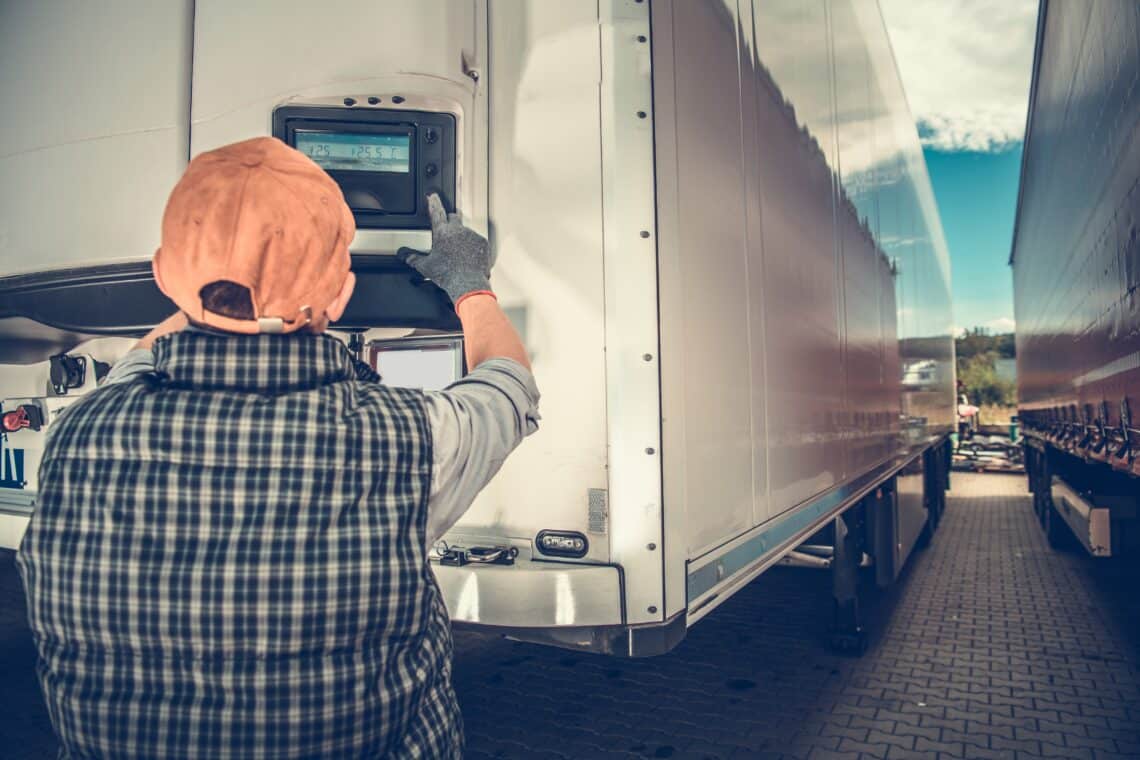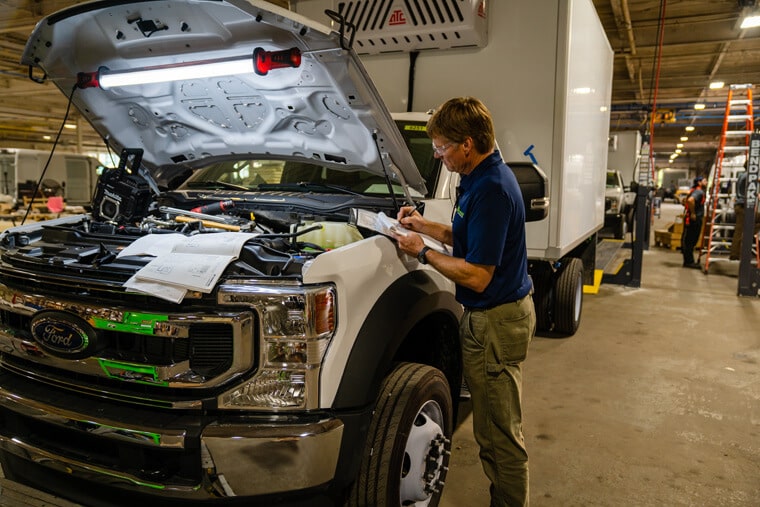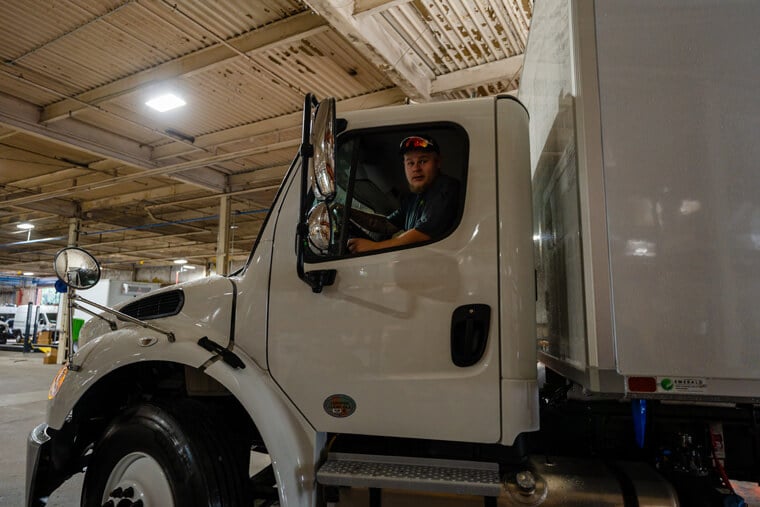
7 Signs It’s Time to Replace Your Refrigerated Vehicle
Joe Dickman | October 7th, 2025
For any fleet that manages the delivery of perishable goods — whether a refrigerated or freezer truck, or one of many different types of reefer vans — a reliable refrigerated vehicle is vital. Since these types of vehicles are serious investments, it’s essential to know when it’s time to replace your current equipment.
Go too long without upgrading, and you risk higher repair costs, increased breakdowns, and other dangers that can severely impact your finances and long-term operations. Here is a guide on the best time to replace your refrigerated vehicle.
Increase in Repair Issues and Costs
Frequent vehicle downtime not only increases costs but also puts your perishable items at risk. It’s also usually the first sign that a replacement is on the horizon, especially when repair costs start to outpace the cost of replacement. However, instead of relying on gut instinct to replace your refrigerated truck or van, it’s best to proactively track maintenance costs as part of a vehicle replacement strategy.
Tracking maintenance costs year-over-year is a great way to strategically determine when a refrigerated vehicle has outlived its usefulness. To find and track this number, divide the total maintenance expenses over the course of the year to understand the annual cost.
Vehicle Age
The lifespan of a refrigerated vehicle is between 7-10 years. Once your vehicle has passed that threshold, you can expect to see a jump in repair issues and costs: see the prior section. Part of the reason why age corresponds with increased maintenance is that insulation performance declines over time.
As the unit becomes unable to retain cold temperatures, it adds stress to the refrigerated unit to keep temperatures steady. Other aspects impacted by age include rubber seals on doors, hoses, and gaskets, which tend to dry out and crack, leading to leaks and inefficiencies.
When maintenance starts to exceed utility, you know that the time to replace your refrigerated vehicle is near. For that reason, it’s essential to track the age of your refrigerated vehicle to inform your vehicle replacement strategy. To make it more robust, consider tracking make and model as well, to understand what works best for your fleet needs.
Temperature Fluctuations
Ensuring that products are maintained at optimal temperatures is the main reason for purchasing a refrigerated truck or vehicle. Not only does it impact customer satisfaction by protecting the integrity of goods upon arrival, but it’s also important for safety and financial stability.
While temperature fluctuations can be expected in aging vehicles, such issues are unacceptable in recent purchases. If you’ve recently acquired a new reefer truck or van, checking if you have a warranty with the dealer could be a great option for keeping replacement costs low. Otherwise, it’s best to cut your losses and replace the entire unit.
Using temperature monitoring tools or telematics is a great way to keep an eye on the efficacy of your refrigerated vehicle, especially if temperature variations persist before and after servicing.
Emerging Technology and New Model Releases
You might be okay with your current refrigerated vehicles, even if they are a little bit older. However, failing to upgrade can mean you’d miss out on saving money from upgrading to more contemporary models with new features and functionality without splurging on brand new vehicles.
Vehicles that are even just a few years old tend to be more fuel-efficient than older ones. Like any vehicle, when a new refrigerated truck is released, the older editions tend to drop in price. With some due diligence, you can upgrade your older models to newer ones that offer more efficient, energy-saving features, among many others.
For example, recent innovations in insulation technology that leverage recycled water bottles now make refrigerated trucks lighter, increasing fuel efficiency. And solar-powered refrigeration systems now make it easier to maintain regulatory compliance by lowering carbon emissions and significantly reducing environmental impact.
Business Growth and Expansion
Starting to see a spike in demand or thinking of expanding into new product lines? Then it might be time to replace your refrigerated vehicle with one that better suits your future needs. The goal of a growth-driven vehicle replacement strategy is to take advantage of an emerging opportunity.
For instance, you may begin to see demand for both cold and hot deliveries. In that case, investing in a multi-temperature vehicle that can be calibrated for hot and cold temperatures might be a better investment long-term. Or you can instead make a smaller investment by converting a van into a chiller van to test demand.
If you’re looking to make a data-driven decision, consider examining your vehicle utilization rate, load capacity usage, and route demand growth (number of routes, miles, and hours per week) to guide your choice.
Increasing Regulation and Compliance
In the world of cold chain logistics, ensuring compliance with regulations is paramount. And they are ever evolving. Consider California Zero-Emission Vehicle Regulation, which made it mandatory for all newly manufactured transport refrigeration units (TRUs) to use low-GWP refrigeration starting in 2023 and for fleets to turn over 15% of their vehicles to a zero-emission option each year.
While the jury is still out on whether the turnover rule will hold, the rest of the regulations under CARB still apply. And this is just one example of regulations you must keep on top of. There’s also the Food Safety Modernization Act (FSMA) and OSHA standards that must be followed.
If your vehicle fails to comply with any of these regulations, it’s time to replace it with one that can. Ultimately, a new law or compliance data can make the replacement decision for you. Taking a proactive stance to track and monitor them can help you stay ahead of potential fines and fees.
Seasonality
While the actual performance of the vehicle typically determines the optimal time for replacement, there are certain times during the year when it makes the most sense. For example, summer tends to be peak season for refrigerated vehicle replacement. And it makes a lot of sense.
During the winter months, trucks require less energy and fuel to keep products cold. Additionally, failing compressors and insulation degradations may be harder to spot in colder weather. But as warmer temperatures creep up, refrigerated trucks and vans may not be able to keep up with performance demand.
One way to work around it is to ensure your fleet is in optimal condition is to purchase replacement vehicles pre-spring and fall, if your needs can wait. Taking this approach can help you save upfront costs by buying a vehicle when demand is low.
Deciding the Right Time to Replace Your Refrigerated Vehicle
Knowing the best time to replace your refrigerated vehicle can help you prepare to make purchases in advance instead of being forced to do so under less-than-ideal circumstances. The best way to accomplish this is by having a sound vehicle replacement strategy that uses fleet KPI metrics and performance.
Interested in replacing your vehicle now? Take a look at our comprehensive guide to know what to look for before buying one. At Emerald Transportation Solutions, we have a wide variety of refrigerated trucks and vans that can be a serious upgrade for your business. Looking for customization options? We cover that too. Contact us with any questions about our vehicles and funding options.
Editor’s Note: This blog was originally published in June 2021 and has been updated for comprehensiveness in October 2025.
Related Articles
Contact Us
Feel Free To Contact Us If You Have Any Questions
What does under DOT mean?
Questions regarding DOT requirements come up often. 10,000 lbs GVW (gross vehicle weight) and over are commercial vehicles that fall under the Department of Transportation regulatory requirements.
What is the difference between GVW and payload?
GVW or Gross Vehicle Weight is the entire weight of the vehicle including the payload. The payload weight represents the amount of cargo you are hauling.
What is a self-powered unit and a vehicle-powered unit?
A self-powered unit has its own fuel source and will run independent of the truck. This is the heaviest and most expensive option. While vehicle-powered units run off the engine via a compressor mounted on the engine. These are less expensive and lighter in weight but you must run the truck or plug the electric standby into shore power.
What does K-factor mean and why is that important?
K-factor is a term that stands for the overall insulating value of the container (truck body). Quite simply the lower the K-factor the better the truck body will be able to maintain a given temperature and require less energy to do so.
How much lighter is a Poly Van vs a US spec body?
Poly Van bodies are very light. On average we estimate we are 75-150 lbs per foot lighter than a traditional sheet and post foamed in place body. These weight savings translates to less fuel burn and less CO2 emissions, along with added payload, the most important benefit.






